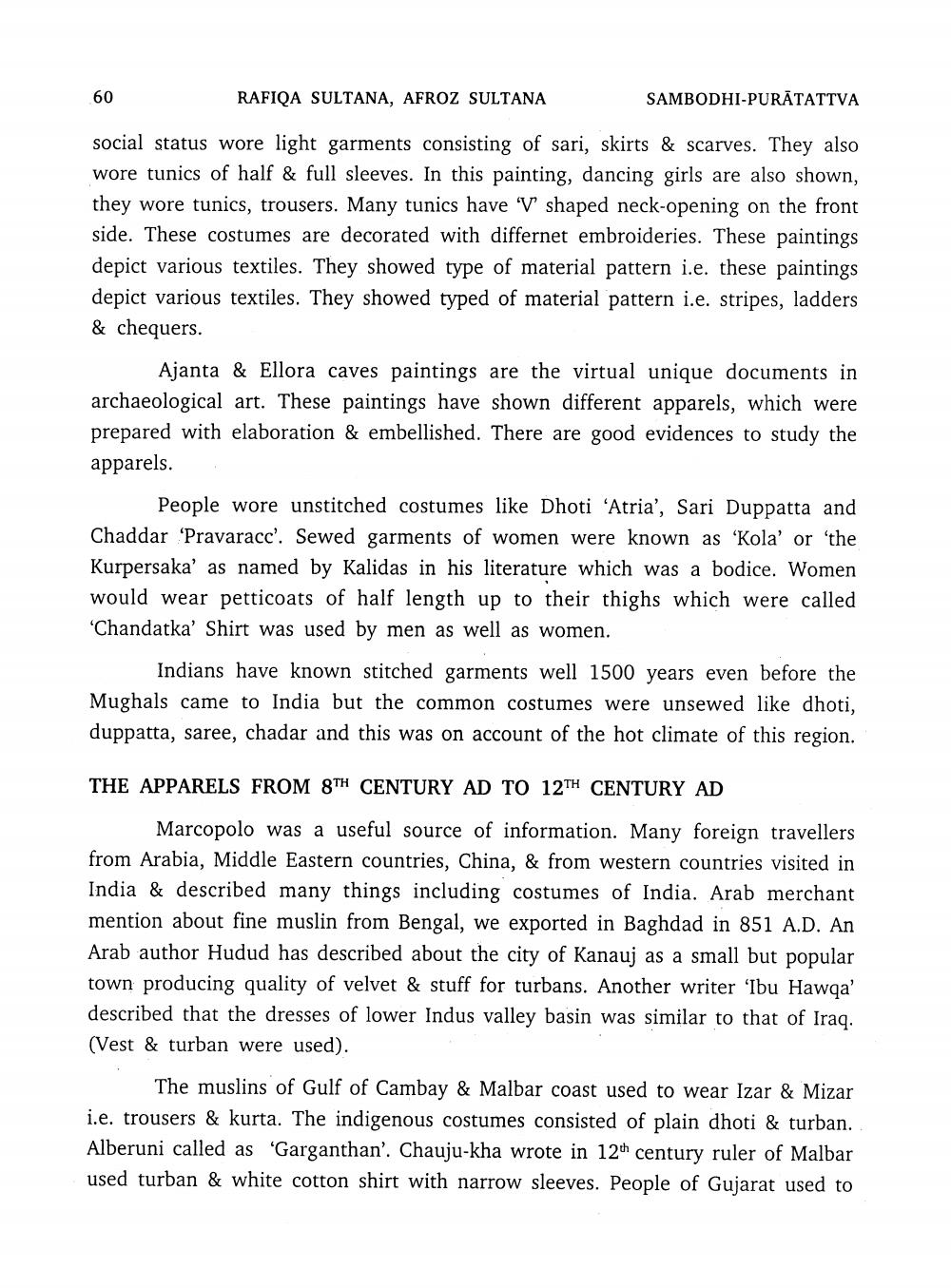________________
60
RAFIQA SULTANA, AFROZ SULTANA
SAMBODHI-PURĀTATTVA
social status wore light garments consisting of sari, skirts & scarves. They also wore tunics of half & full sleeves. In this painting, dancing girls are also shown, they wore tunics, trousers. Many tunics have 'V' shaped neck-opening on the front side. These costumes are decorated with differnet embroideries. These paintings depict various textiles. They showed type of material pattern i.e. these paintings depict various textiles. They showed typed of material pattern i.e. stripes, ladders & chequers.
Ajanta & Ellora caves paintings are the virtual unique documents in archaeological art. These paintings have shown different apparels, which were prepared with elaboration & embellished. There are good evidences to study the apparels.
People wore unstitched costumes like Dhoti 'Atria’, Sari Duppatta and Chaddar 'Pravaracc'. Sewed garments of women were known as “Kola' or 'the Kurpersaka' as named by Kalidas in his literature which was a bodice. Women would wear petticoats of half length up to their thighs which were called 'Chandatka’ Shirt was used by men as well as women.
Indians have known stitched garments well 1500 years even before the Mughals came to India but the common costumes were unsewed like dhoti, duppatta, saree, chadar and this was on account of the hot climate of this region.
THE APPARELS FROM 8TH CENTURY AD TO 12TH CENTURY AD
Marcopolo was a useful source of information. Many foreign travellers from Arabia, Middle Eastern countries, China, & from western countries visited in India & described many things including costumes of India. Arab merchant mention about fine muslin from Bengal, we exported in Baghdad in 851 A.D. An Arab author Hudud has described about the city of Kanauj as a small but popular town producing quality of velvet & stuff for turbans. Another writer 'Ibu Hawqa' described that the dresses of lower Indus valley basin was similar to that of Iraq. (Vest & turban were used).
The muslins of Gulf of Cambay & Malbar coast used to wear Izar & Mizar i.e. trousers & kurta. The indigenous costumes consisted of plain dhoti & turban. Alberuni called as "Garganthan'. Chauju-kha wrote in 12th century ruler of Malbar used turban & white cotton shirt with narrow sleeves. People of Gujarat used to




